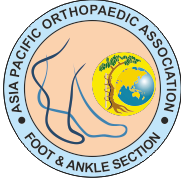Virtual Fellowship 2025
How it relates and why it exists
Metatarsus adductus
Metatarsus adductus is a common foot deformity in newborns where the front half of the foot (forefoot) turns or bends inward toward the big toe side.1
Here is how it relates to other conditions and why it is thought to exist:
Why It Exists (Cause) [edit]
The exact cause is unknown, but the leading theory is that it is due to positional constraints inside the womb (intrauterine compression).2 This theory is supported by several factors:
Tight Fetal Positioning: Limited space in the uterus, especially in late pregnancies, in first-born children, or in cases of multiple births (twins), is thought to press the infant's foot into the curved position.
Breech Position: The baby's bottom being pointed down in the womb is a potential risk factor.3
Oligohydramnios: A reduced amount of amniotic fluid can contribute to a tighter environment.4
Family History: A genetic predisposition may also play a role, as the condition sometimes runs in families.5
The condition is considered a congenital deformity (occurring during the fetal period to a normally developed structure) rather than a malformation (occurring during the embryonic period, causing an anatomical defect).6
How It Relates to Other Conditions [edit]
Metatarsus adductus is primarily a forefoot problem, and the rest of the foot and ankle are generally normal.7However, it is related to or must be differentiated from several other conditions:
Developmental Dysplasia of the Hip (DDH):
Infants with metatarsus adductus have an increased risk of also having DDH.8
DDH is a condition where the hip socket is too shallow, allowing the top of the thigh bone to slip in and out.9
For this reason, a careful hip exam is usually done when metatarsus adductus is diagnosed.10
In-Toeing (Pigeon Toes):11
Metatarsus adductus is a cause of in-toeing, which is when the feet point inward during walking.12
Clubfoot (Talipes Equinovarus):13
It is different from clubfoot.
In metatarsus adductus, only the forefoot turns inward, while the hindfoot (heel and ankle) remains normal.14
In clubfoot, the entire foot is pointed downward and turned inward, affecting the bones, muscles, and tendons of the heel and ankle as well.15 Clubfoot is a more complex deformity requiring more intensive treatment.
Skewfoot:
This is a less common and more severe deformity that includes metatarsus adductus (forefoot adduction) along with a heel that turns outward and a midfoot deformity. Skewfoot is sometimes thought to occur after a rigid metatarsus adductus.
Hallux Valgus (Bunions):
There is some evidence in adults suggesting a correlation, either positive or negative, between metatarsus adductus angle and the severity of hallux valgus (bunions), depending on the configuration of the foot deformity.16
In the majority of cases, metatarsus adductus is a flexible condition that resolves on its own without treatment as the child grows and begins to use their feet.17

